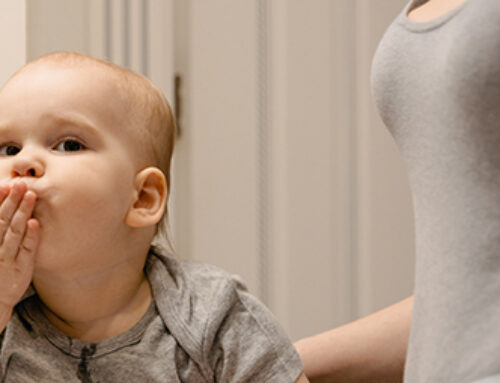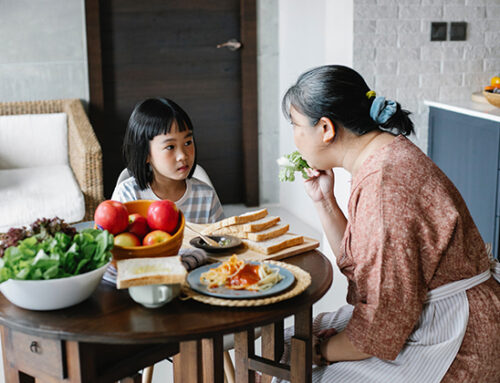What is Communication?
Communication is any form of modality (i.e., gestures, verbalization, sign language, etc.) used to obtain and exchange information.
Joint Attention
Teaching children to understand that communication is a shared experience. We need joint attention in order to communicate. Joint attention is a shared experience between two people who are interested in the same occurrence or object. For example, when a parent draws attention to a toy, “Look at the car!” The child will look at the toy and look at the parent affirming that they are both attending to the same thing. Joint attention promotes back and forth exchanges in communication.
Expanding on Words Used
When children begin to communicate, they may utilize the same words or phrases. The following strategies listed can be used to help promote expansion of vocabulary.
- Verbal Routines: A verbal routine usually consists of the same set of words repeatedly. A common example is the verbal routine of “Ready, set, go!” or “1, 2, 3, go!” Use of verbal routines combined with rising tone of voice can help promote joint attention and increase familiarity in communication exchanges.
- Expectant Pauses: An expectant pause is what can be used after a verbal routine has been established. For example, with “Ready, set, go,” we can pause after the word “set.” The pause is where the child may feel empowered to complete the routine, as they know what will happen after they say the word “go.” Verbal routines and expectant pauses can be utilized with any cause-and-effect toys such as a ball or bubbles.
- Expansion: Expansion is the addition of words on the single word a child produces. For example, if the child says “Car,” the adult can expand on that word saying, “I see a car” or “Red car.” Expansion helps to provide models on how the child can expand their own language.
- Options: Providing options is an excellent way to model novel words to the child as well as reduce potential frustration during communication exchanges. For example, a child may request “Help,” but what they want is not entirely clear. During these moments, the adult can model “Do you want x or y.” At that point the child may indicate what they want through pointing, verbalization, or show that they want something else. At that point, we can request the child show us what they want and reinforce the choice through a model, “You want __.”
Follow Up
If there are concerns related to communication abilities, it is recommended to follow up with a speech-language pathologist to further assess and potentially recommend strategies which may benefit the child.
References
Clark, C. (2014, September 23). Functional communication. Speech and language kids. https://www.speechandlanguagekids.com/functional-communication/

Blue Bird Day fosters socialization, sensory regulation, and pre-academic learning in children ages 2-7 years in therapeutic rotations that simulate preschool and kindergarten settings. Our compassionate therapists practice a relationship-based and family-centered approach, provide parent training, and collaborate on goals and individualized intensive treatment plans for your child.
We believe in a collaborative and multi-disciplinary team approach to therapy. A team of occupational therapists, speech-language pathologists, dietitians, developmental therapists, behavioral therapists, physical therapists, and therapeutic assistants are created for each child to ensure child and family are fully supported and the best possible results are achieved.
Options for individualized, group and virtual therapy sessions are available as well.
Want to learn more or you have a specific question? Feel free to connect with us here!



